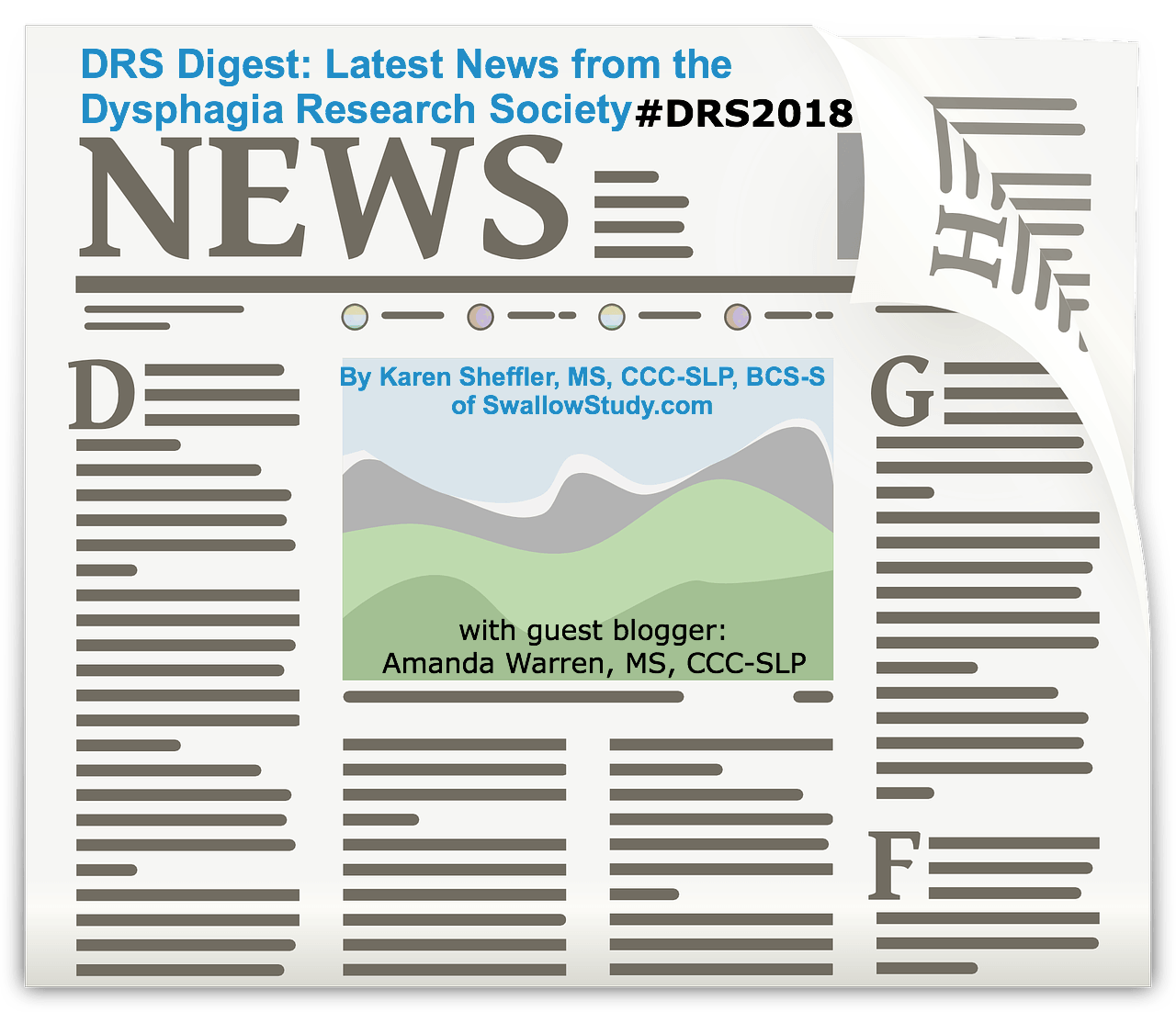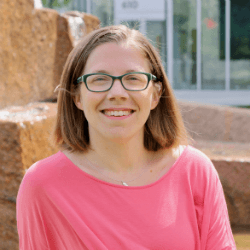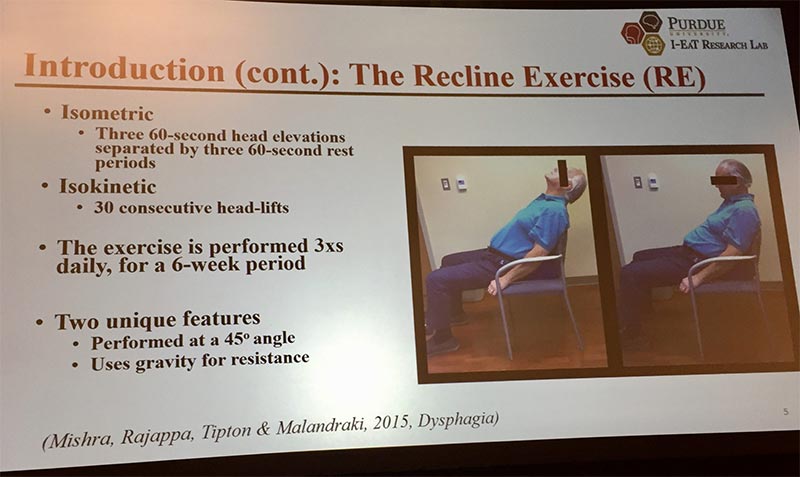
Truth is Stranger than Fiction – in the Latest Dysphagia Research
(Part 2)
By guest blogger: Amanda Warren, MS, CCC-SLP
Edited by Karen Sheffler, MS, CCC-SLP, BCS-S of SwallowStudy.com
Thanks for reading part 1 of our Truth Is Stranger Than Fiction series. You’ve found part 2 of our 3-part (click here for Part 3) series summarizing swallowing research from the 2018 Dysphagia Research Society’s Annual Conference. We will cover 5 more dysphagia truths here, numbered 6-10. Be sure to come back for part 3 to get my whole scoop. And remember, these are not the only topics that were covered at this year’s DRS, nor are they potentially even the most important, but they were a few that made me think the most. So, read on. You might just learn that even in the field of dysphagia, truth is stranger than fiction.
6. People are poor at localizing food, liquid and/or pill residue, especially with pharyngeal (throat) residue.
From session titled Pharyngeal versus Esophageal Stasis: Accuracy of Localization presented by Stevie Marvin
Stevie Marvin, MS CCC-SLP at UWHealth and colleagues retrospectively reviewed videofluoroscopic swallow study (VFSS) and upper GI findings on a cohort of 300+ participants who had been referred for dysphagia. They eliminated all with specific diagnoses known to cause pharyngeal disorders (e.g., strokes and head and neck cancer, just to name a couple). These participants marked on a diagram where they felt food sticking – choosing between the throat (pharynx), upper (cervical) esophagus, middle (thoracic) esophagus, or some combination thereof. They found that across the 300+ participants, only 29% were accurate at localizing residue. However, accuracy was higher in those with only esophageal findings rather than those with pharyngeal findings. Also, 41% of participants who complained of residue in the throat (pharyngeal residue) actually had retention of food/liquid/pills in the esophagus instead (esophageal stasis).
As a practicing speech-language pathologist (SLP) who performs VFSS studies, you might ask yourself, are you doing enough esophageal scans when a person comes in with complaints of residue in the throat? Or are you just looking at the throat and upper esophagus and telling them that they are fine? If you’re not doing esophageal scans on every patient, you might be missing red flags for esophageal dysphagia that is perceived as “pharyngeal” symptoms in your patients. As a reminder, Allen and colleagues in 2012 also found that esophageal screens on VFSS identified the presence or absence of esophageal disease in 63% of participants.
But let’s say you’re not regularly performing VFSS studies. Does this study apply to you? Sure, it does! Think for a second… how many times this week have you asked your patient during swallow therapy or in a clinical swallowing evaluation: “Is it all gone? Does anything still feel stuck?” If you know now that your patient is likely inaccurate in answering this question, how much weight do you place on his answer in making clinical recommendations about diet advancement? How often do you refer for an instrumental swallowing evaluation (VFSS or fiberoptic endoscopic evaluation of swallowing/FEES) to confirm your bedside suspicions?
7. In order to accurately train your patients on a pharyngeal swallow exercise or maneuver, they need visual biofeedback.
From session titled Kinematic Visual Biofeedback Improves Accuracy of Swallowing Maneuver Training and Accuracy of Clinician Cues During Training in Post-Stroke Participants with Dysphagia presented by Alicia Vose
The Swallowing Systems Core was hard at work on several studies looking at laryngeal vestibule closure. This one by Alicia Vose and colleagues was especially interesting to me. She worked with 21 participants status-post stroke, training each of them how to perform a volitional Laryngeal Vestibule Closure (vLVC) maneuver, which has the person volitionally prolong or lengthen the airway closure and protection, in turn reducing risk for prandial aspiration.
Check out this YouTube Video from Dr Ianessa Humbert’s prior Florida lab.
While normal LVC closure is 300-1000 milliseconds, the SLPs trained participants in this study to keep their laryngeal vestibule closed for 2 seconds or longer. They used either VFSS feedback, electromyography (EMG) feedback, or a combination of both. They measured both the participants’ success at completing the task, as well as the clinicians’ success at determining if the patient was actually performing the technique. Results revealed that these participants who had strokes were more accurate at performing the vLVC maneuver with VFSS or the combination of VFSS plus EMG feedback rather than with EMG alone. Maybe not surprisingly, given fact #5 in part 1 of this blog series, which noted that clinicians were more accurate at determining if the patient was actually performing a technique when they could see the VFSS than when they were relying on EMG alone.
This makes me wonder: how many of us practicing clinicians are teaching pharyngeal maneuvers and exercises at the bedside only? Has your patient’s accuracy been checked on an instrumental examination? Can the person even do what you are asking? Whether it’s a vLVC maneuver or the Mendelsohn maneuver or breath holds during a super supraglottic swallow…. How do you know that your patients are performing the maneuver or exercise appropriately? How many minutes per day do you spend sitting at bedside “ensuring that your participants are doing their exercises right?” You might want to start with considering objective (and visual) ways to provide biofeedback for your participants. Hopefully, your video screen or cart is moveable, and you will start showing your patients their swallow during your instrumental evaluations.
8. If your patient cannot lay flat, she/he can still participate in exercises like the Shaker to improve hyolaryngeal excursion and upper esophageal sphincter opening.
From session entitled The Recline and Head-Lift Exercises have Similar Biomechanical Swallowing Outcomes and Detraining Effects in Older Adults: A Randomized Clinical Trial presented by Robert Fujiki
Were you excited when you heard about the Chin Tuck Against Resistance (CTAR) as an alternative to the Shaker exercise? Me too! But I still have subgroups of participants who are not great candidates for the Shaker (especially due to reflux risk) or the CTAR. So, I was thrilled to hear Robert Fujiki tell us about the work on the Recline Exercise that he and his colleagues are doing along with Dr. Georgia Malandraki and her team at Purdue University in Indiana. Recline Exercise you say? Never heard of it? Let me tell you more!
This group of researchers started with healthy adults and have now moved on to working with a group of older adults (sample size = 22, mean age = 67 years) who were randomized either to the Shaker exercise (in supine) or the same exercise but in a reclined position. This group of elders went through training, performed the exercise at home for 6 weeks followed by 6 weeks of without the exercise. Swallow kinematics were tested via VFSS, as well as functional measures of penetration/aspiration and also perceived level of exertion. They found that in these normal adults, those performing the Reclined Exercise had similar improvements in kinematics as those in full supine and that gains were maintained over time. In addition, those who performed this Recline Exercise perceived less exertion than those with the Shaker (in supine).
Clearly, more work needs to be done studying this exercise in participants with dysphagia before we can confidently apply this new approach to all of our participants (don’t worry, they’re on it!). In the meantime, we can remain cautiously optimistic and, with caveats in place, maybe even try out the new Recline Exercise with a couple of your patients who would benefit from a Shaker but are not loving the exercise due to the lying flat position!
9. Adherence rates to swallow exercises regimens are typically poor, though minimally studied in swallowing research.
From session titled Patient Adherence, Tongue Force Generative Capacity, and Swallowing Outcomes presented by Dr. Brittany Krekeler
When Brittany Krekeler shared with us her (recently published just after DRS) review of patient adherence, my ears definitely perked up. Brittany described to us her own surprise when, during her time in Dr. Nadine Connor’s lab at the University of Wisconsin, she began delving deeper and found how few studies even comment on patient adherence within the article. How few you ask? Only 12 in the 2034 articles. Of those 12, most were regarding prophylactic swallow exercises for participants with head and neck cancer. Adherence ranged from only 21.9% to 51.9%. She acknowledged that, as a field, we are not yet regularly addressing the impact of low adherence on our study designs. And she commented that we need more data regarding why adherence is so low.
But regardless of the why, Brittany identified a gap in our knowledge in swallowing research that I feel is directly applicable to our clinical work. I would challenge you to think about how these numbers might impact your clinical practice, too. Do you assign your participants “homework” exercises? How do you know if they are really doing it? Do you make decisions about frequency of skilled visits (or frequency of objective reassessment) based on your presumptions about how much “homework” your patients are doing?
10. Swallow timing is variable across the age range, but notably later and longer in healthy older adults.
From session titled Differences in Timing Between Swallows of Healthy Older and Healthy Young Adults presented by Dr. Catriona Steele
Dr. Catriona Steele of the University of Toronto may be constantly busy as a dedicated volunteer board member with the International Dysphagia Diet Standardisation Initiative (IDDSI), but her lab also generates a plethora of important dysphagia research. She shared a collaborative study that her team has undertaken with the University of Sao Paulo regarding swallowing timing. These groups gathered 20 healthy young adults (retrospective, age 22-45) and 17 healthy older adults (prospective, age 60-84) and analyzed a wide variety of measures of physiology, swallow events, kinematics and timing. Her presentation this year at DRS was focused primarily on the timing piece, and she noted that the healthy older adults had:
- later hyoid burst onset,
- longer swallow reaction time (aka, laryngeal vestibule closure reaction time – LVCrt),
- late maximum pharyngeal constriction relative to UES opening, and
- longer UES opening overall.
This session, of course, made me think, too. First of all, isn’t it amazing how each of these parameters of swallowing interrelate with the others? It is a complex inter-dependent system! But more importantly, this made me question: How do I define normal? If longer swallow timing measures are evident in healthy older adults, are my colleagues and I over-diagnosing the infamous “swallow initiation delay?” And how does our diagnosis of this delay impact our opinions about aspiration risk and thus diet management? Worse yet, are we suggesting thickened liquids based on these over-identifications of “risk?” What changes can we make today to give our participants the credit they deserve for potentially just being a normal healthy older adult?!
*******
This post is part 2 of a 3-part series. Stay tuned for the next installment of Dysphagia Digest: news from the Dysphagia Research Society. Keep in mind; many of these studies are still in process. Where possible, we will point you to citations and primary literature to read. But in many cases, you will need to wait months (if not up to a year) forfinal results to be out on this data. This gives you all the more reason to regularly attend the Dysphagia Research Society’s Annual Meetings. The next one is in sunny San Diego from March 7-9, 2019!
In the meantime, we encourage you to read other work on related topics by these authors. Links provided to their research where possible. But never hesitate to trot on over to https://pubmed.ncbi.nlm.nih.gov and take a peek around for yourself! You can even use the “Open Access [filter]” in PubMed to find the free-open-access articles available. See also: https://www.ncbi.nlm.nih.gov/pmc/tools/openftlist/
Thank you again to my guest blogger:
 Amanda Warren, MS, CCC-SLP, is a medical Speech-Language Pathologist practicing in the city of Boston, MA. She has extensive experience in outpatient, acute care, rehabilitative care, skilled nursing and home care environments. Amanda teaches in Speech-Language Pathology at the undergraduate level at Gordon College and at the graduate level at Boston University. She is an author of continuing education courses at Northern Speech Services. She has a special interest in palliative dysphagia management, augmentative communication at the end of life, and patient-family advocacy and education.
Amanda Warren, MS, CCC-SLP, is a medical Speech-Language Pathologist practicing in the city of Boston, MA. She has extensive experience in outpatient, acute care, rehabilitative care, skilled nursing and home care environments. Amanda teaches in Speech-Language Pathology at the undergraduate level at Gordon College and at the graduate level at Boston University. She is an author of continuing education courses at Northern Speech Services. She has a special interest in palliative dysphagia management, augmentative communication at the end of life, and patient-family advocacy and education.


